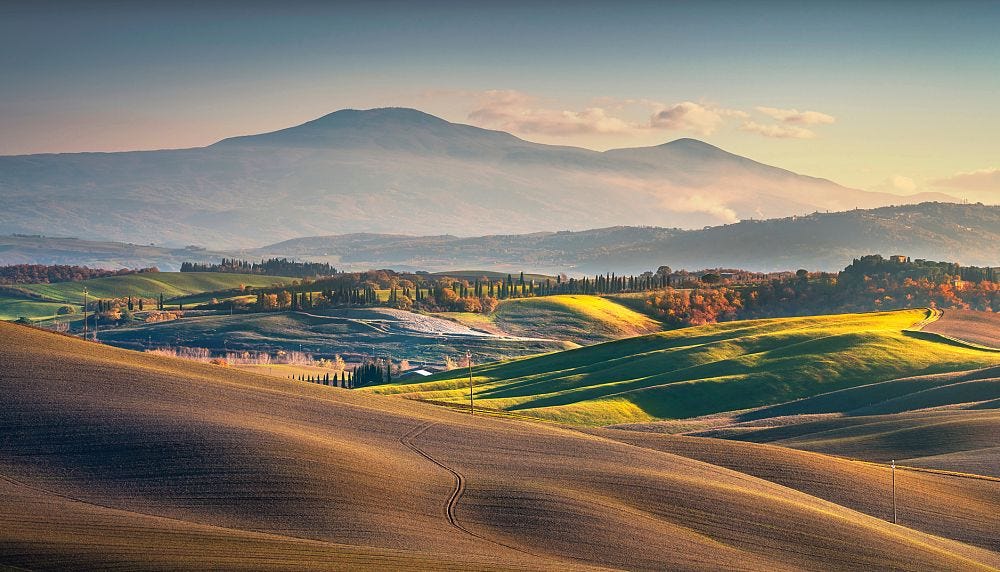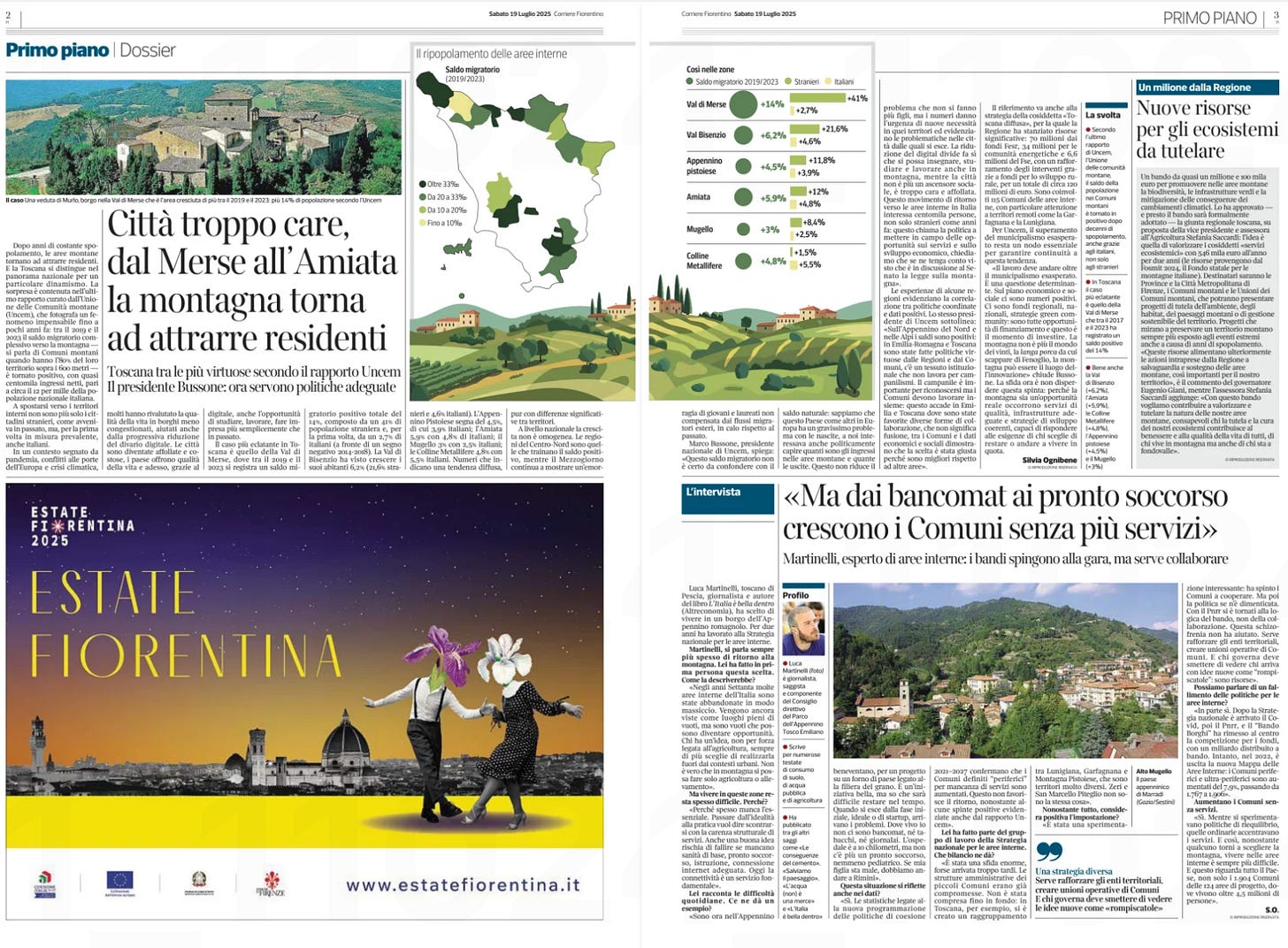From City Life to Mountain Living: Italy’s Young People Are Joining the Shift - Tuscany's case
Dalla città alla montagna: la nuova rotta (anche) dei giovani italiani - Il caso toscano
Spinti da costi urbani insostenibili e attratti da una qualità di vita più autentica, sempre più giovani scelgono borghi e paesi di montagna. Una tendenza che dall’estero stiamo iniziando a raccogliere anche noi, tra opportunità e sfide ancora aperte.
Per anni lo abbiamo detto: “In Italia non succederà mai”. Le aree interne e montane, svuotate da decenni di emigrazione, sembravano condannate a una lenta e inesorabile desertificazione sociale. Poi qualcosa è cambiato. I dati più recenti dell’Unione delle Comunità Montane raccontano un fenomeno inedito: tra il 2019 e il 2023, il saldo migratorio verso i comuni montani è tornato positivo. Non è solo merito degli stranieri – come accadeva un tempo – ma, per la prima volta, anche di tanti italiani. E tra loro, finalmente, ci sono i giovani.
Le ragioni sono molte e note. Le città hanno perso attrattiva: affitti inaccessibili, traffico, costi quotidiani sempre più alti e un mercato del lavoro che, soprattutto per i più giovani, offre contratti precari e poco spazio di crescita. In montagna, invece, la combinazione di digitalizzazione crescente, spazi più ampi, comunità più coese e un ritmo di vita meno frenetico sta facendo breccia anche tra chi fino a pochi anni fa non avrebbe mai pensato di lasciare la metropoli.
La Toscana è oggi una delle regioni più virtuose in questa tendenza. La Val di Merse, per esempio, ha visto una crescita del 14% della popolazione in quattro anni, con un contributo significativo di giovani italiani. Anche Amiata, Mugello e Appennino Pistoiese mostrano segni di rinascita, frutto di politiche regionali mirate e di una crescente collaborazione tra comuni.
Non si tratta però di un idillio senza ombre. Il ritorno in montagna porta con sé sfide concrete: servizi sanitari ridotti, scuole a rischio chiusura, trasporti pubblici scarsi. E non basta il Wi-Fi veloce per costruire un’economia solida: servono politiche di sviluppo coerenti, incentivi per chi investe, progetti di rigenerazione che coinvolgano realmente le comunità locali.
Dall’estero, questo movimento è iniziato prima. In Francia, Spagna e Portogallo, politiche coordinate e investimenti mirati hanno trasformato villaggi semi-abbandonati in centri vivaci per giovani famiglie e lavoratori da remoto. In Italia, la pandemia ha accelerato la consapevolezza, ma la vera sfida è mantenere il trend quando l’emergenza è finita.
Oggi la montagna non è più “il mondo dei vinti” di cui parlava Fenoglio, ma un laboratorio di futuro. Giovani imprenditori, freelance, creativi e professionisti del digitale stanno scoprendo che vivere in quota non significa rinunciare alle opportunità, ma crearne di nuove. La condizione? Che alle belle storie facciano seguito infrastrutture, servizi e un quadro normativo capace di sostenere chi sceglie questa strada.
La rotta è tracciata. Ora si tratta di capire se sarà una moda passeggera o una vera rivoluzione abitativa.
From City Life to Mountain Living: Italy’s Young People Are Joining the Shift
Driven by rising urban costs and a desire for a more authentic quality of life, more young Italians are choosing mountain towns. A trend long seen abroad is finally taking root here — with opportunities and challenges ahead.
For years, we told ourselves: “That could never happen in Italy.” The country’s rural and mountain areas, hollowed out by decades of migration, seemed destined for a slow demographic fade. But the numbers now tell a different story. According to the latest data from the National Union of Mountain Communities, between 2019 and 2023 net migration to mountain municipalities has turned positive. And this time, it’s not just foreign arrivals — for the first time, a growing share are Italians. Among them, young people are finally making their way up the hills.
The reasons are clear. Cities have lost their shine: sky-high rents, suffocating traffic, escalating living costs, and a job market that offers the young little more than short-term contracts and limited prospects. Mountain life, on the other hand, is becoming more viable thanks to better internet connectivity, more space, tighter-knit communities, and a slower pace of life that feels like a luxury in itself.
Tuscany stands out as one of the most dynamic regions in this shift. In Val di Merse, for example, the population grew by 14% in just four years, with young Italians making a noticeable contribution. Amiata, Mugello, and the Pistoiese Apennines are also showing signs of revival, thanks to targeted regional policies and stronger cooperation between municipalities.
But this is no fairy-tale escape. Returning to the mountains comes with real challenges: limited healthcare services, schools at risk of closure, scarce public transport. And fast Wi-Fi alone won’t sustain a strong local economy — coherent development strategies, investment incentives, and genuine community engagement are essential.
Elsewhere in Europe, this movement started earlier. In France, Spain, and Portugal, coordinated policies and targeted investments have transformed half-abandoned villages into thriving hubs for young families and remote workers. In Italy, the pandemic sped up awareness, but the real challenge is to keep the momentum going now that the emergency is over.
Today, the mountains are no longer “the world of the defeated” described by Fenoglio, but a testing ground for the future. Young entrepreneurs, freelancers, creatives, and digital professionals are discovering that life at altitude doesn’t mean giving up opportunities — it means creating new ones. The condition? That inspiring stories are backed by solid infrastructure, reliable services, and a supportive legal framework.
The path is set. The question now is whether this will be a passing trend or a true housing revolution.


